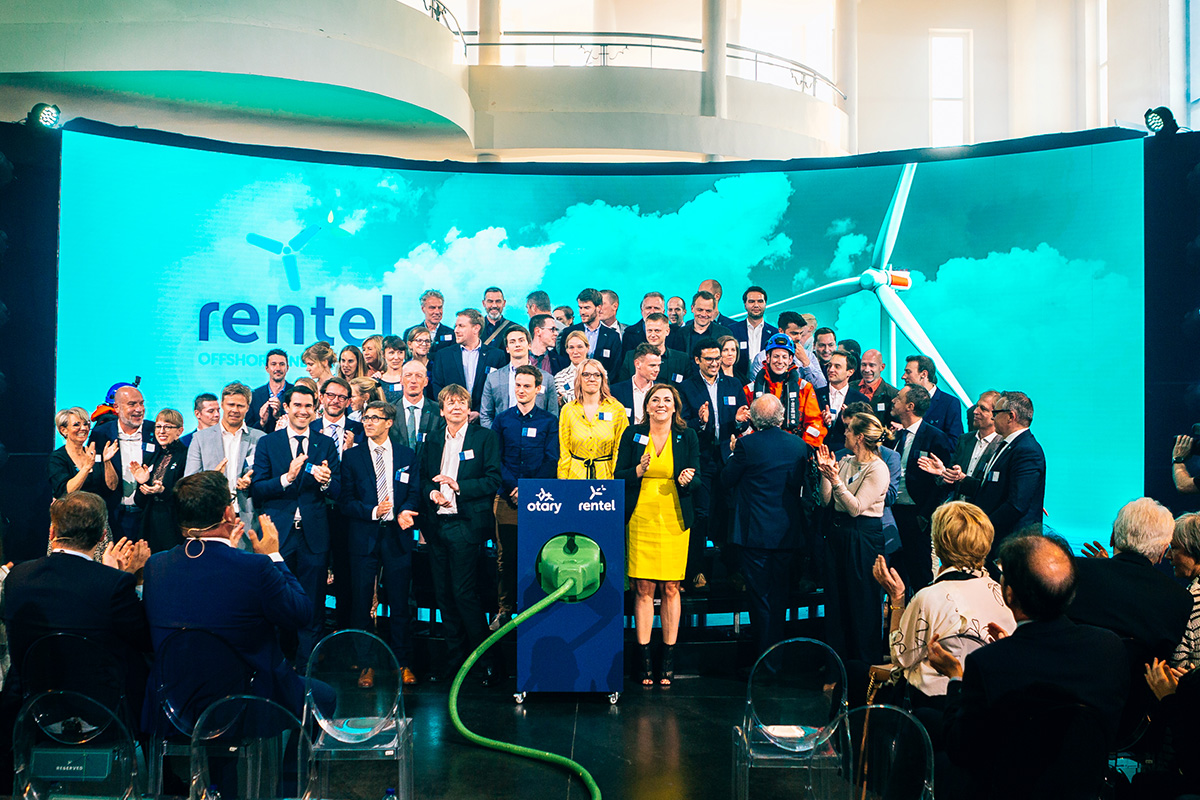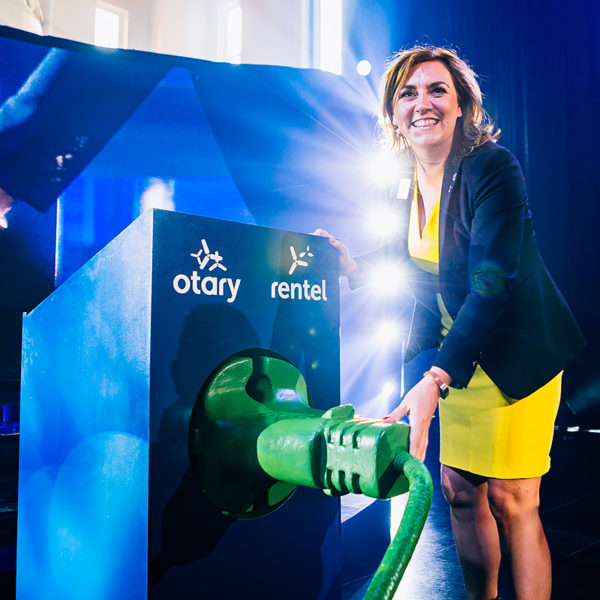News
Offshore wind to play leading role in Belgian decarbonisation
2 May 2019
On 30 April, the official inauguration of the Rentel wind farm took place in the Ostend Hippodrome in Belgium. Rentel is the first offshore wind farm built by Otary, a consortium that unites eight major Belgian wind players. The wind farm consists of 42 wind turbines with a total capacity of 309 MW, providing sustainable energy to 300,000 Belgian households.
WindEurope CEO Giles Dickson took part in the inauguration, alongside Rentel’s board of directors, shareholders, investors, contractors and the Rentel team. Ostend mayor Bart Tommelein, Minister of the North Sea Philippe De Backer and Minister of Energy, Environment and Sustainable Development Marie-Christine Marghem also attended.
Belgium is currently one of the most dynamic countries in terms of offshore wind energy; despite its comparatively small coastline, Belgium makes excellent use of its offshore wind resource. Speaking at the inauguration, Philippe De Backer, Minister of the North Sea: “Our North Sea is small, but by using this space in a smart way we can maximize green, affordable energy. Thanks to our Belgian enterprises, which have boosted the green energy market, we are now the fifth biggest producer of offshore wind energy worldwide. That is why I have decided to double the wind capacity in the North Sea to 4 GW.”
Rentel CEO Nathalie Oosterlinck agreed that “Belgium is a pioneer in offshore wind energy, which over the years has become a true Belgian export product.” With Federal elections at the end of the month, Oosterlinck stressed the importance of the next Government making “conscious choices for a carbon-neutral future. A long-term vision is needed, and this vision must be implemented in a coherent way,” she added.Belgium’s National Energy and Climate Plan (NECP) is a key way to address the climate change challenge. There is now an EU-wide renewable energy target of 32% by 2030. In the current draft of its NECP, Belgium promises a 2030 total renewables target of 18.3%. This stands in contrast to Belgium’s 2020 renewable energy target of 13%. Currently, renewables account for just 9.1% of Belgium’s energy demand. There is still a long way to go.
Offshore wind energy is a key factor in reaching both the Belgian and European climate objectives. And Belgium’s current NECP draft reflects that fact. The draft contains high ambitions for offshore wind, with an expected 4 GW of total installed capacity by 2030. By 2020, after the commissioning of the last offshore wind farms in the Belgian North Sea, offshore wind energy will make up over 10% of the total Belgian energy mix.
European offshore wind capacity grew by 18% in 2018. Find out how by reading our report: Offshore Wind in Europe: Key trends and statistics 2018



